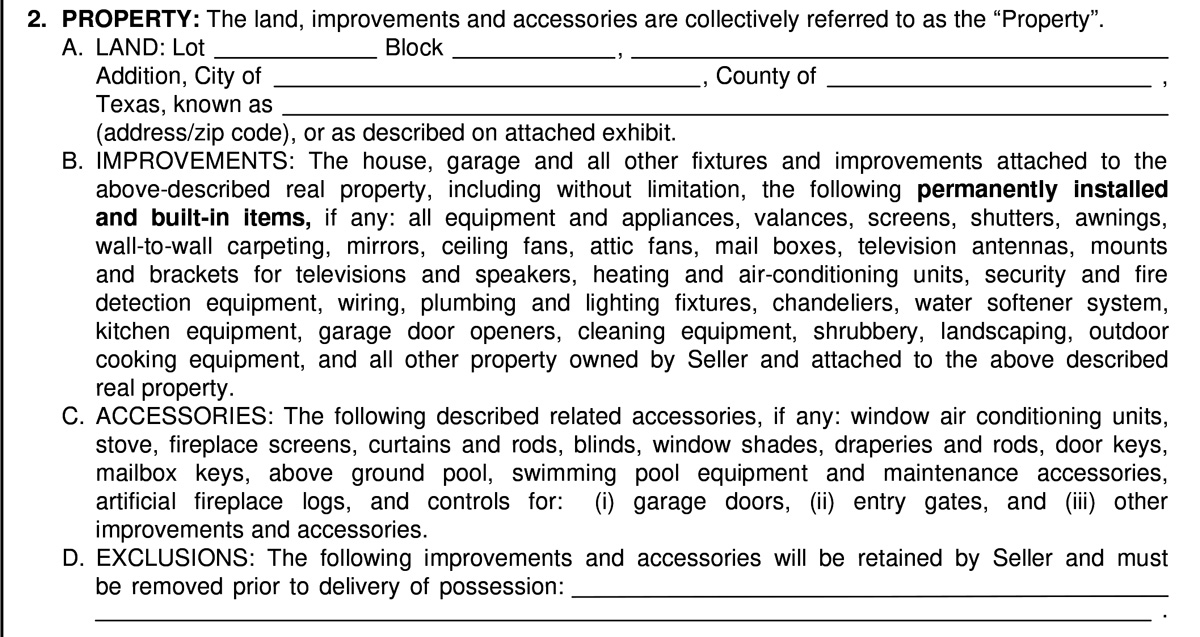 Note: The Texas Association of Realtors and TREC update promulgated forms regularly. For the most recent updates, check with TAR, TREC, or contact me at brian@starpointerealty.com.
Note: The Texas Association of Realtors and TREC update promulgated forms regularly. For the most recent updates, check with TAR, TREC, or contact me at brian@starpointerealty.com.
Note: I am a real estate professional, not a lawyer. Nothing herein should be construed as legal advice or instructions.
Welcome to the first installment of my Texas Paperwork Series, where we get down and dirty with all the paperwork you might run across when buying, selling or investing. There is A LOT of stuff to sign, so I hope to create here a home that can help explain each of the paragraphs.
In this series, we will look at all the promulgated forms issued by either the Texas Association of Realtors (TAR) or Texas Real Estate Commission (TREC).
What are promulgated forms? Real estate agents are not lawyers, and cannot legally draw up contracts. But contracts are the bread and butter of being an agent! So to create tools for agents, TAR and TREC both have forms that their lawyers have generated and that agents can “fill in” to conduct business. There is just about a form for everything, as you will see shortly. But in some cases, perhaps unique or complicated real estate deals for which there’s no existing promulgated form, you will have to consult a lawyer for advice and to draw up the documents.
The first form we will start to go over is the most common and important one for buyers and sellers alike: The One to Four Family Residential Contract (Resale), or simply – “The Contract”. This is the document that, when signed by both parties, is the basic agreement for the sale or purchase for most residential property (there are separate forms for new homes and condos we will discuss later). This form is one of the most important to understand as a buyer or seller. So let’s get started with paragraphs 1 and 2!
Paragraph 1. Here you are listing the legal names of the two parties in the contract (the buyer and the seller. Your name here is how it will be shown on the title to the property. Both party’s spouses should also be included; Texas is a community property State and anything you buy or sell must be signed off with your significant other!
Paragraph 2.A. This is the full legal description of what exactly is being sold/purchased. Surveyor’s do not know homes as 123 Main St. Streets change. Numbers change. Legal descriptions do not. You can find your property’s legal description with the county tax assessor. Following the legal description is the line for what your property is “known as”, which is usually the postal address which we all know and love. Complicated legal descriptions might need to be shown in a separate attachment. Show that attachment in Paragraph 22 (List of Addenda).
Paragraph 2.B and C. These paragraphs go into more detail about what the real “Property” is that is being sold, and what is personal property that the seller will be keeping. Basically, if it is attached to the home or the property, it is part of the “Property” and being sold. For example, that is why kitchen ovens do not need to specifically noted as being included, but the refrigerator does. The oven is usually attached; refrigerators usually aren’t.
Paragraph 2.D. Are you the seller, and something that is technically “part of the property” something you want to keep? Maybe a tree you planted in remembrance of your grandmother, or your 60” TV mount in your living room that is screwed into the wall? This is the place to include it, showing the buyer clearly what you will be taking with you when you move!
I hope you found this helpful! Next post will be on Paragraphs 3 and 4: Sales Price and Financing.
Questions about specific circumstances? Funny real estate stories about when someone goofed up on one of these? Please share in the comments below!
 Brian E Adams, REALTOR®
Brian E Adams, REALTOR®
StarPointe Realty Central Texas LLC
brian@starpointerealty.com
(512) 763-7912
Licensed in the State of Texas


